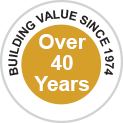VALUE ENGINEERING
Convrgnt applies Value Engineering principles in most projects we work on.
Value can be defined as the ratio of function to cost. Value can be increased by improving the function or optimising the cost. In the context of construction, performance and safe use of a building is non-negotiable and must be preserved, value must therefore be increased by using economical materials and /or techniques to achieve the desired performance.
VALUE ENGINEERING PROCESS
Value engineering is carried out by systematically following a multi-stage workflow.
A systematic and dynamic method to improve value starts by first examining performance and /or function in relation to its cost.

- Preparation
- Information
- Analysis
- Creation
- Evaluation
- Presentation
Prepearation: Employer objectives and brief are assimilated to reflect the direction and required end result.
Information gathering: At this stage the required performance functions are identified. This step determines what functions or performance characteristics are important.
Analysis: Function & Performance versus cost and life cycle benefits are weighed leading to a list of VE candidates.
Alternative generation / Creation: At this stage value engineering asks what the various alternative ways of meeting the requirements are.
Evaluation: At this stage the alternatives are assessed by evaluating how well they meet the required functions & how great will the cost savings be.
Presentation: In the final stage, the best alternative will be chosen and presented to the client for final decision.
